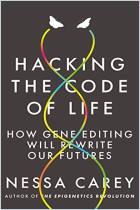
Article
Landmark CRISPR Trial Shows Promise Against Deadly Disease
Administering gene-editing treatment directly into the body could be a safe and effective way to treat a rare, life-threatening condition.
Nature,
2021
References:
Gillmore et al. (2021)
Recommendation
Previous gene-editing therapies involved removing cells from the body, revising their genetic material, then re-infusing the cells. A breakthrough clinical trial now proves that gene-editing components called CRISPR-Cas9 can be injected directly into the body with astonishing results, offering hope to those suffering from at least one painful, life-threatening disease. Scientists think similar therapies could improve the lives of countless others.
Summary
About the Author
Heidi Ledford is a senior reporter for Nature. She specializes in biomedical topics such as cancer research, drug development, biotechnology and CRISPR.
By the same author
Learners who read this summary also read
Book
Book
Article
Article


















Comment on this summary or Démarrer une discussion